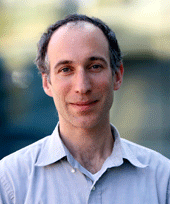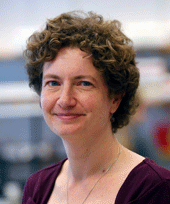Four HMS faculty members are among the 27 new investigators appointed to the Howard Hughes Medical Institute (HHMI). All investigators will receive the flexible support necessary to move their research in creative new directions. The initiative, according the HHMI announcement, represents an investment in basic biomedical research of approximately $150 million over the next five years.
The new group of HHMI investigators – which includes 10 current HHMI Early Career Scientists – were selected from a group of 1,155 applicants.
“HHMI has a very simple mission,” said HHMI President Robert Tjian in a statement. “We find the best original-thinking scientists and give them the resources to follow their instincts in discovering basic biological processes that may one day lead to better medical outcomes. This is a very talented group of scientists. And while we cannot predict where their research will take them, we’re eager to help them move science forward.”
HHMI provides each investigator with his or her full salary, benefits, and a research budget over their initial five-year appointment. The Institute will also cover other expenses, including research space and the purchase of critical equipment. Their appointment may be renewed for additional five-year terms, each contingent on a successful scientific review.
The newly appointment HMS researchers are:

Vamsi Mootha, HMS professor of systems biology at Massachusetts General Hospital
Mootha has a passion for mitochondria. These ancient cellular organelles, which house the cell’s power generators, can cause a host of diseases when they malfunction. Mootha first learned of these conditions as a medical student, and began both doing basic research on the organelle and seeing his first patients with mitochondrial disease. These experiences led him to dedicate his research to the biology of this organelle.
Mootha aims to bridge the divide between molecular studies and the physiology of complex systems. Mitochondria contain small amounts of their own DNA, and Mootha was struck by how much research on mitochondrial diseases focused its search there—even though most mitochondrial proteins are actually encoded by DNA in the cell’s nucleus. Using his background in math and computational biology, he set out to create a more complete picture of mitochondrial biology and its contribution to disease.
He has since resolutely pushed the field forward. On the physiology side, his lab characterized the molecular identity of the mitochondria’s calcium uniporter, a key channel of communication between the organelle and its cell. And on the disease side, he used innovative approaches to define the 1,100 proteins in mammalian mitochondria, developed computational tools to predict protein function, and linked mitochondrial gene mutations to human disease.
In less than a decade, Mootha’s work has led to genetic diagnostics, prenatal screens, and a deeper understanding of an organelle that can be involved in a multitude of common diseases, including neurodegeneration, type 2 diabetes, and cancer.

David Reich, HMS professor of genetics
Ever since modern humans evolved, groups of them have been on the move, mixing with other groups they encountered. Reich is a world expert at finding evidence of mixing between human populations. He has shown that this mingling of genes is a profound part of human evolutionary history.
His studies have also exposed some surprising dalliances in our species’ past. In 2010, Reich co-led a team that was the first to sequence and analyze the genome of Neandertals. The data showed that the Neandertals weren’t just our cousins—they were occasionally our mates, the source of about 2 percent of the DNA in the genomes of present-day non-Africans. After isolating DNA from a preserved finger bone, Reich and coworkers found that a mysterious group called the Denisovans, who dwelled in Siberia around 50,000 years ago, also left their genetic mark in the DNA of some present-day people. His team has also applied its methods to medical questions. They uncovered seven DNA alterations that might explain why prostate cancer is about twice as common in African American men as in men of European ancestry.
This year, Reich and colleagues opened a state-of-the-art laboratory for analyzing ancient DNA in his HMS lab, which requires special precautions to prevent contamination with modern DNA. He plans to use the facility to probe European history and Native American history and to dig deeper into the origins of India’s inhabitants, who are descended from people who lived in northern India and a distinct group his team has identified from the southern part of the country.

Johannes Walter, HMS professor of biological chemistry and molecular pharmacology
Walter studies how DNA genomes are copied, or replicated, before cell division and how DNA damage is repaired to prevent errors in the genetic blueprint. To this end, he employs a unique approach in which purified DNA molecules are added to extracts of frog eggs, where they undergo replication and repair outside the confines of a cell. Using this highly tractable experimental system, Walter has uncovered how an enzyme called the MCM2-7 helicase, which he’s called the “first violin in the symphony of DNA replication,” separates the two strands of DNA in preparation for genome duplication.
Another question he’s addressed is how cells avoid making more than one copy of their DNA. He showed that the process of genome duplication triggers the destruction of a key initiator of DNA replication, thus preventing a second round of replication. His team has also unraveled how cells repair a hazardous form of DNA damage—called interstrand cross-links—that can block replication by causing the two DNA strands to stick together. Walter and his colleagues determined how this mechanism fails in Fanconi anemia, a human genetic disease characterized by bone marrow failure and cancer susceptibility. Walter’s lab has recently turned its attention to understanding how the proteins BRCA1 and BRCA2 repair DNA. Mutations in BRCA1 and BRCA2 dramatically raise the risk of breast cancer.

Rachel Wilson, HMS professor of neurobiology
After a few molecules waft into your nostrils, you know whether you’re standing next to a fresh-baked apple pie or a pile of rotting apples. Rachel Wilson aspires to learn how the brain translates sensory information such as these aromas into impulses it can interpret and act on.
In the lab, Wilson and her team work to understand sensory processing using fruit flies as their model organism. Her toolbox for studying fly perception is well stocked. She devised a delicate technique for recording the electrical activity of individual neurons in a fruit fly’s tiny brain, which consists of about 100,000 neurons. Not only can she and her colleagues eavesdrop on specific neurons, they can also pinpoint a neuron or group of neurons, delete a cell from a neural circuit to gauge its function, and tamper with genes to assay the roles of particular proteins.
Her team is now probing the function of a brain structure in fruit flies called the antennal lobe, an olfactory relay station that is analogous to the olfactory bulb in mammals. Wilson’s lab has discovered that the antennal lobe reformats or “transforms” signals to allow the brain to better extract information about odors in the environment. Some of the steps in this transformation are similar to what occurs in the visual system, suggesting that a core set of fundamental principles are shared by different sensory systems. Wilson’s research group is continuing to branch out from olfaction to study the rules of information processing in the auditory system of fruit flies. This change in direction will permit Wilson to compare and contrast which rules and algorithms are used by two very different sensory systems.
Adapted from HHMI news release.


